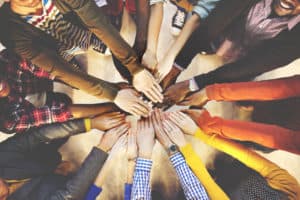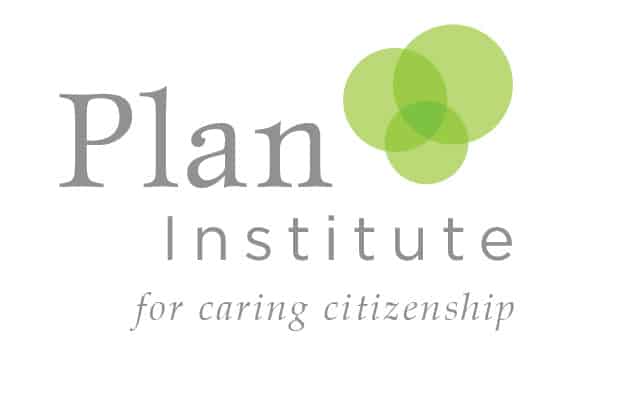By Stephanie Debisschop, Director, Plan Institute
Originally published in Transition Magazine
When looking to create impact, we often start by asking ourselves, what is our goal? What are we trying to achieve? The key is to make sure to always ask: who else is also trying to achieve these same goals? We’ll quickly come to a place whereby we realize that collaboration holds far more power than competition does. In the world of funding scarcity, the abundance of collaboration is a richness of resource that we would be remiss to overlook.
At Plan Institute, we would be hard-pressed to find a single initiative that we have embarked on that was not steeped in partnership, and that is something we are proud of. Before we partnered with Disability Alliance BC and BC Aboriginal Network on Disability Society on our current Access RDSP project, we tried to go it alone. We had been in discussion with our long-standing partners at the Vancouver Foundation to fund a project regarding increasing uptake of the Registered Disability Savings Plan (RDSP) and an RDSP incentive program called the Endowment 150 grant, which they had been administering for several years. After submitting a solo proposal to the Vancouver Foundation, we found ourselves stalled; our initial proposal did not get the traction we had expected. After a few months, and several candid conversations, it became clear what was missing: collaboration.
The key to our proposal was meaningful partnership with like-minded organizations who were also keen to engage in this complex work. And so, a partnership was born. Our 3 organizations, with incredible support from the Vancouver Foundation, came together to begin work on RDSP awareness, removing barriers to access, and increasing uptake. Since we began just over a year ago, we have helped 221 individuals open or begin the process of opening an RDSP; assisted 469 individuals prepare, apply for or receive the Disability Tax Credit (DTC); hosted 59 RDSP & DTC information sessions for 1665 people; distributed 510 Endowment 150 grants to jumpstart RDSP savings; and made 7991 contacts regarding the RDSP & DTC. None of this would have been possible alone.
 Our inability to go-it alone should never be seen as a weakness, but rather as recognition of where our voice is strongest; which is alongside other voices. We must acknowledge our own strengths and weaknesses, and identify the strengths in others. The ability to see the strength in another organization, team or individual is a gift of immense value; it allows us to see the unique potential that exists within our community, and positions us in a place whereby we are able to receive such gifts. These gifts are powerful. They have the power to change the community of which we are a part, and facilitate true collaboration that values the contribution of all members of the team.
Our inability to go-it alone should never be seen as a weakness, but rather as recognition of where our voice is strongest; which is alongside other voices. We must acknowledge our own strengths and weaknesses, and identify the strengths in others. The ability to see the strength in another organization, team or individual is a gift of immense value; it allows us to see the unique potential that exists within our community, and positions us in a place whereby we are able to receive such gifts. These gifts are powerful. They have the power to change the community of which we are a part, and facilitate true collaboration that values the contribution of all members of the team.
No one ever said partnership was easy. It can be complex, messy, and riddled with competing priorities. It can also be incredibly rewarding. In the end, it’s important to come back to that shared goal that brought us all together: for us, it’s the belief that we all have the right to lead a good life with a meaningful place in our diverse community. It’s important for us to contribute towards creating a place where everyone has an opportunity to be a part of that community. This could never be done alone.
Our journey is filled with potential partners, allies (both known and unknown), friends, challengers, adversaries, and collaborators. Our limitations should be seen not based solely on our own capacity, but rather the combined capacity of our communal efforts. Our real challenge is being open to those who may be interested in joining us on our journey, and to seek true, authentic collaboration, rather than tokenistic partnership. The idea that our next greatest accomplishment as a community could be right around the corner is invigorating, and we firmly believe that such an opportunity can only exist through placing the value of collaboration over competition.
